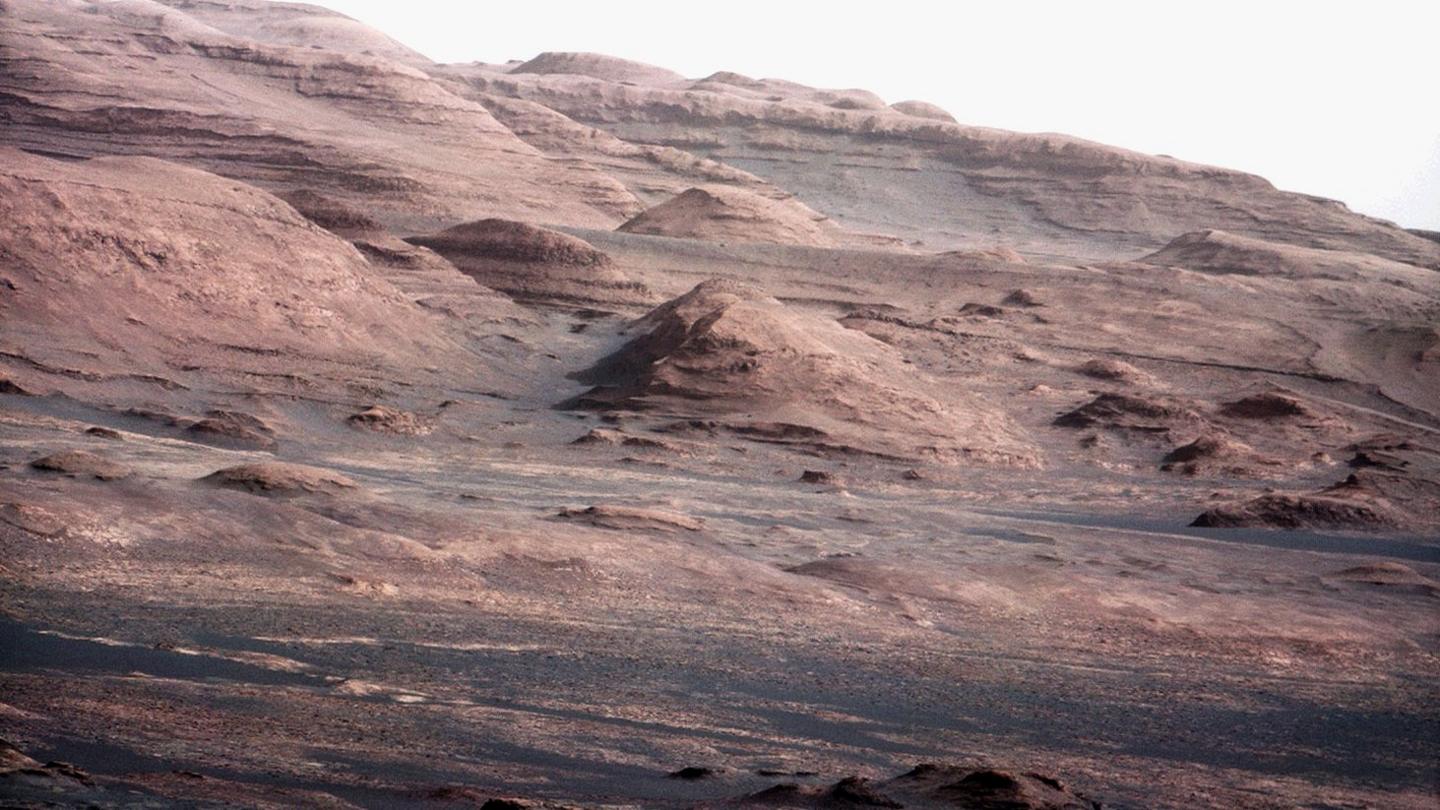India's first Mars satellite 'Mangalyaan' enters orbit
- Published
- comments
Applause broke in the control room out as the probe entered Mars' orbit
India has successfully put a satellite into orbit around Mars, becoming the fourth nation or geo-bloc to do so.
The Mangalyaan robotic probe, one of the cheapest interplanetary missions ever, will soon begin work studying the Red Planet's atmosphere.
A 24-minute engine burn slowed the probe down enough to allow it to be captured by Mars's gravity.
Indian Prime Minister Narendra Modi said the country had achieved the "near impossible".
Only the US, Russia and Europe have previously sent missions to Mars, and India has succeeded on its first attempt - an achievement that eluded even the Americans and the Soviets.
The latest US satellite, Maven, arrived at Mars on Monday.
US space agency Nasa congratulated its Indian counterpart, the Indian Space and Research Organization (Isro), on Wednesday's success.
"We congratulate @ISRO for its Mars arrival! @MarsOrbiter joins the missions studying the Red Planet," the agency tweeted., external

At the scene: Sanjoy Majumder, Bangalore
From early in the morning, there was an atmosphere of excitement and tension at the Indian space agency's mission tracking centre in Bangalore.
Scientists, many of them women and several of them young, were seated in front of their computer monitors tracking the progress of Mangalyaan.
Archive video: A closer look at the Mars orbiter
Giant screens above their heads fed a steady stream of data, graphics and sequence of operations. The first whoops broke out when Mangalyaan successfully fired up its liquid engine, the first in a series of critical moves to make sure that the spacecraft was able to get into the planet's gravitational pull.
Then there was an agonising 20 minutes, when Mangalyaan disappeared behind Mars and beyond contact.
But there was no mistaking the moment, when the scientists all rose as one, cheered, clapped, hugged each other and exchanged high-fives - confirmation that Mangalyaan was now on an elliptical orbit around Mars.
After PM Modi's congratulations, they poured out into the open and the bright sunlight, beaming as they took in the adulation.
"Thrilled to be a part of history," one young scientist told me. "It's like hitting a golf ball from Bangalore to London and getting it into the hole in one go," deputy operations director, BN Ramkrishna said. "It's got to be that precise."

'Better than cricket'
PM Narendra Modi: "We have dared to reach out into the unknown"

There were some anxious moments at ground control as technicians waited for news on the orbiter
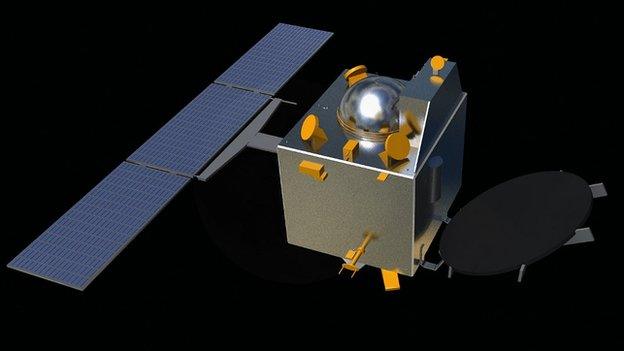
A 24-minute engine burn slowed the probe down enough to allow it to be captured by Mars' gravity
Mr Modi congratulated the scientists and said: "Today, all of India should celebrate our scientists. Schools, colleges should applaud this."
"If our cricket team wins a tournament, the nation celebrates. Our scientists' achievement is greater," he added.
The total cost of the Indian mission has been put at 4.5bn rupees ($74m; £45m), which makes it one of the cheapest interplanetary space missions ever. Nasa's recent Maven mission cost $671m.
The Mangalyaan probe will now set about taking pictures of the planet and studying its atmosphere.
Archive: People in India told the BBC what they thought of the mission
One key goal is to try to detect methane in the Martian air, which could be an indicator of biological activity at, or more likely just below, the surface.
Mangalyaan - more formally referred to as Mars Orbiter Mission (MOM) - was launched from the Sriharikota spaceport on the coast of the Bay of Bengal on 5 November 2013.
The satellite joins four other missions that are circling the planet: Maven (US), Mars Odyssey (US), Mars Reconnaissance Orbiter (US) and Mars Express (Europe).
- Published7 February 2014
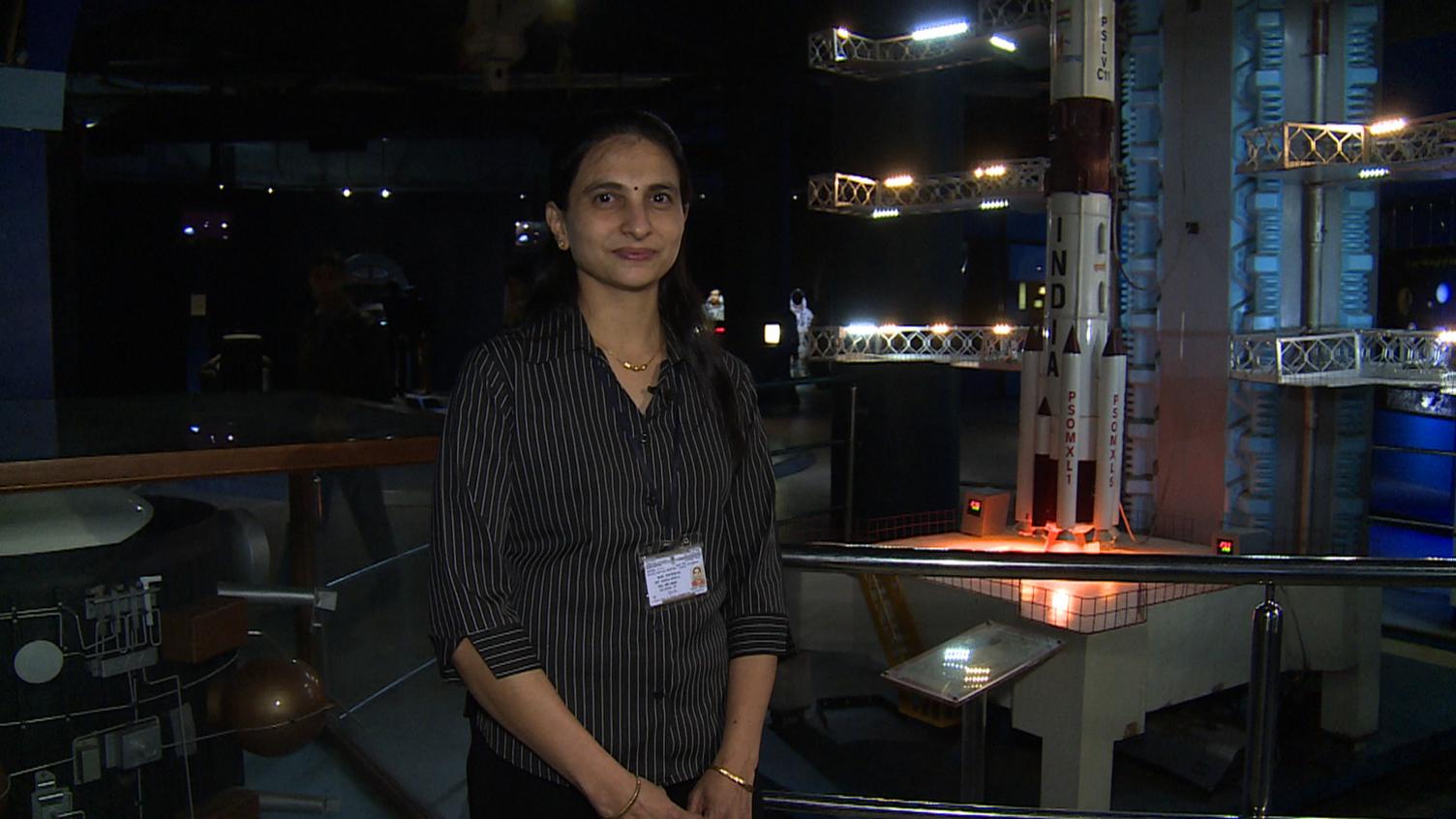
- Published24 September 2014
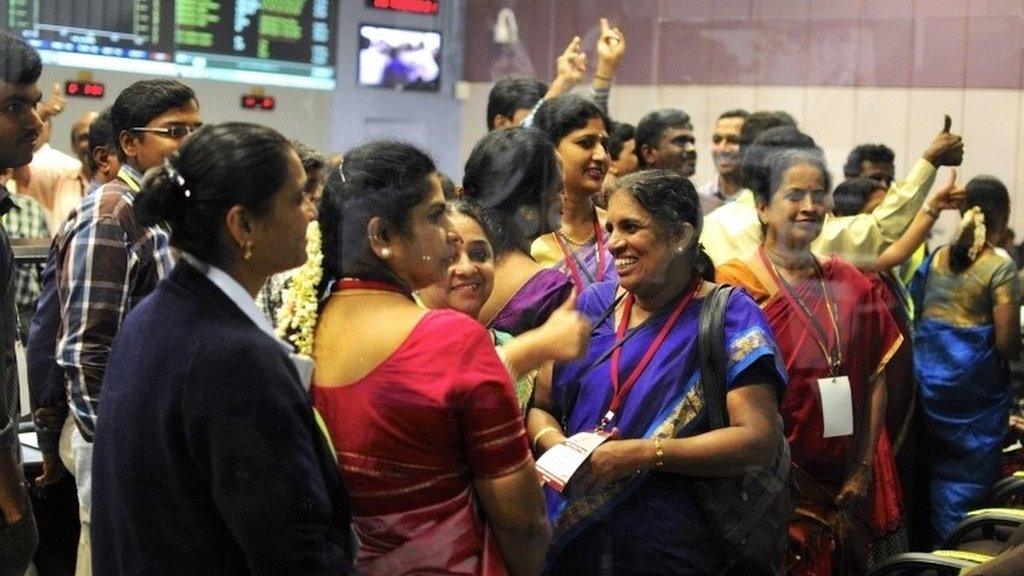
- Published24 September 2014
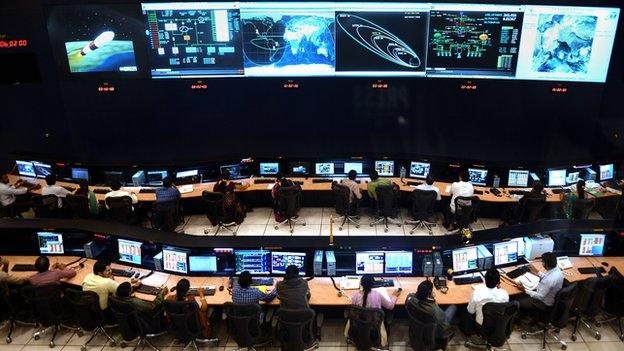
- Published24 September 2014
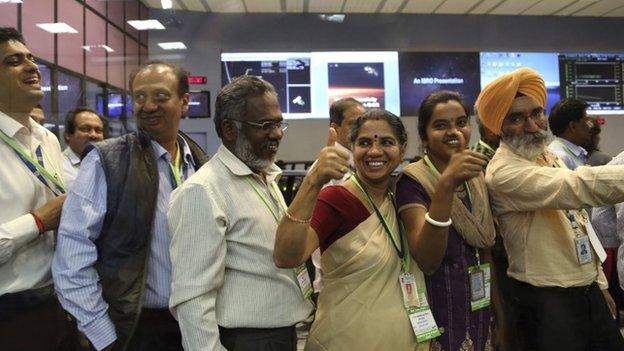
- Published24 September 2014
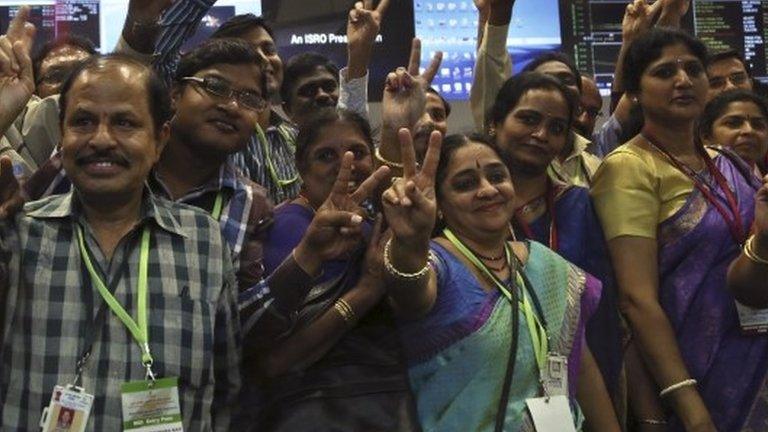
- Published10 November 2013
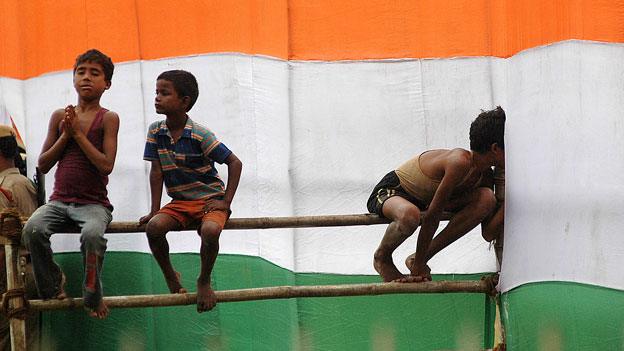
- Published5 November 2013
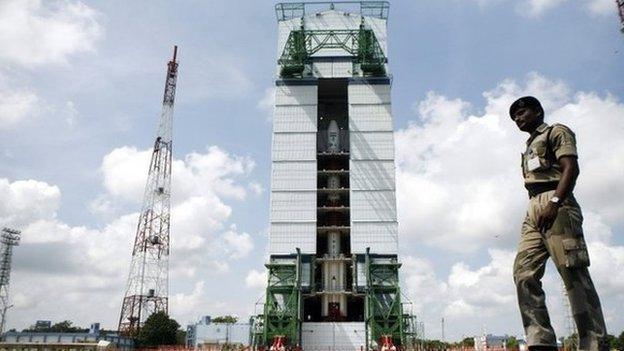
- Published25 May 2013
